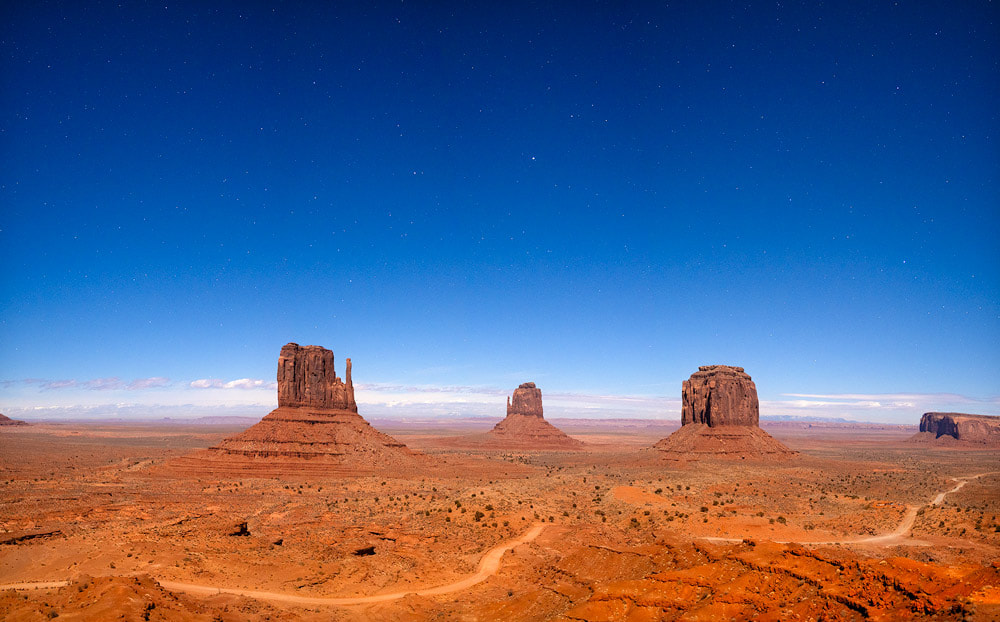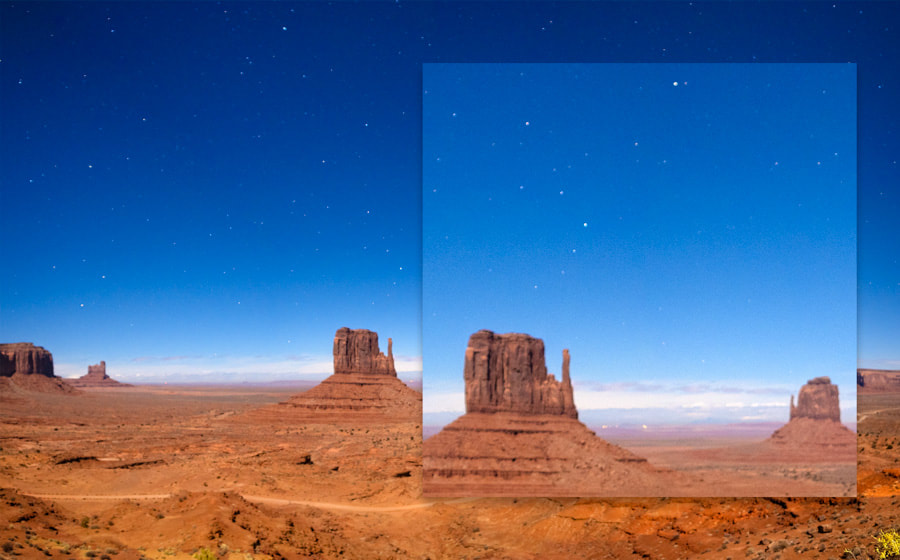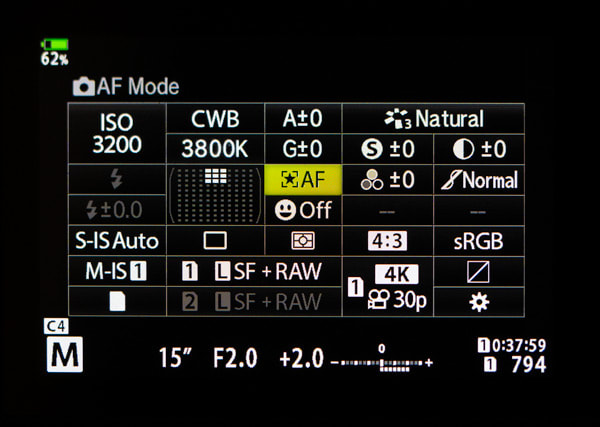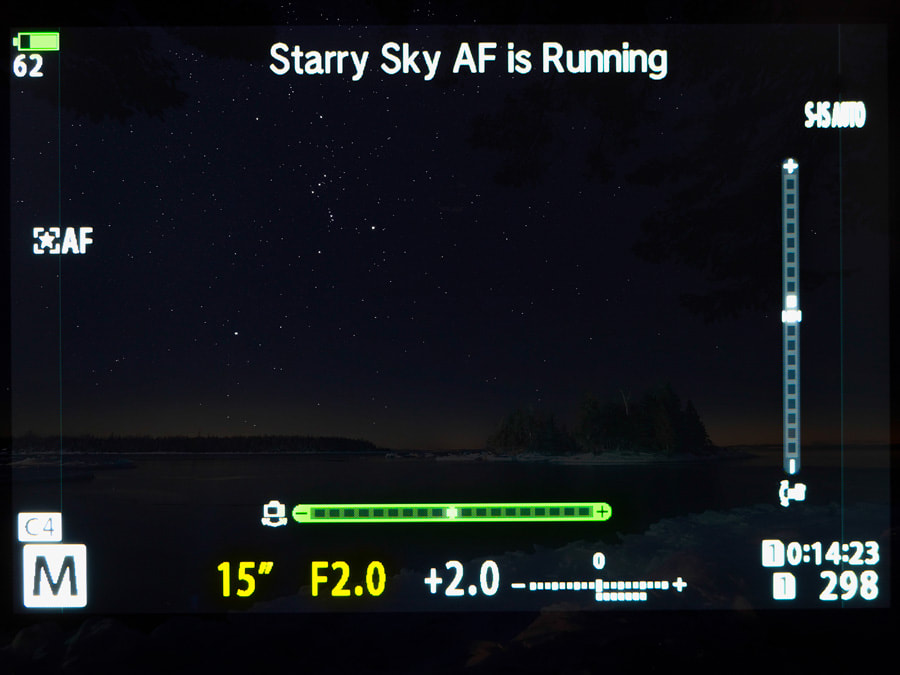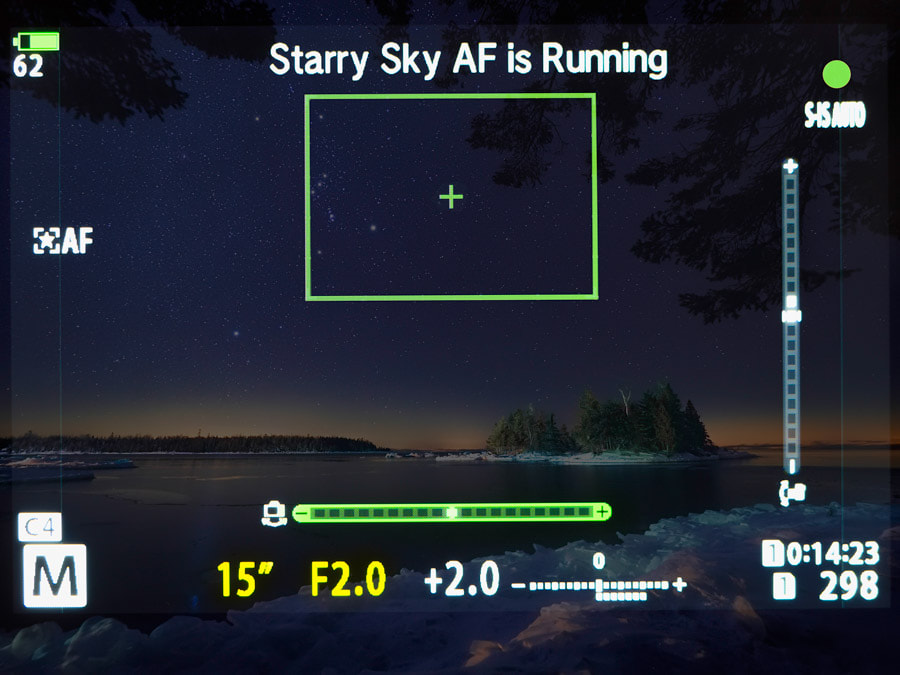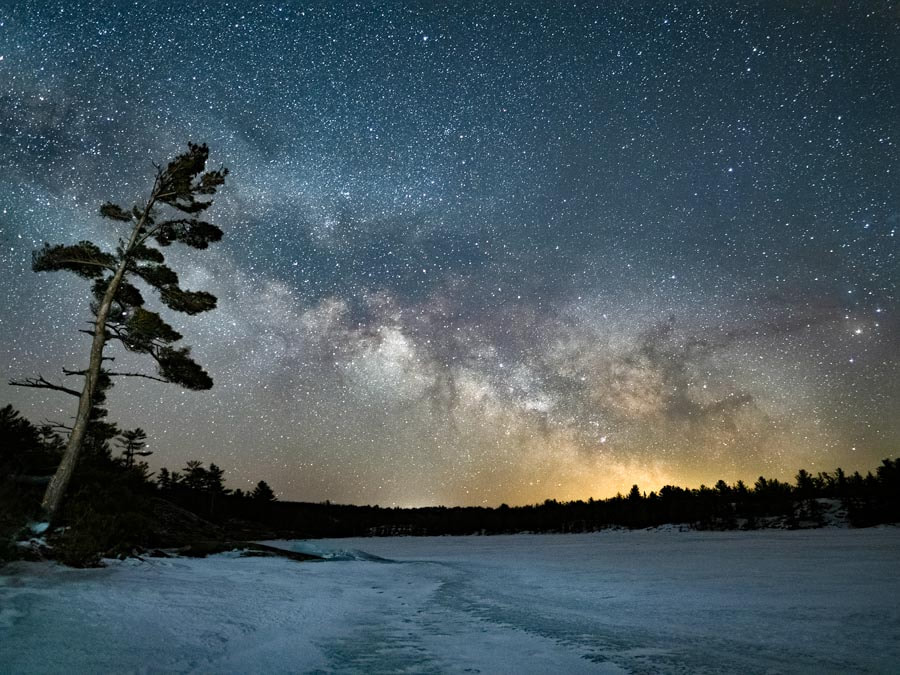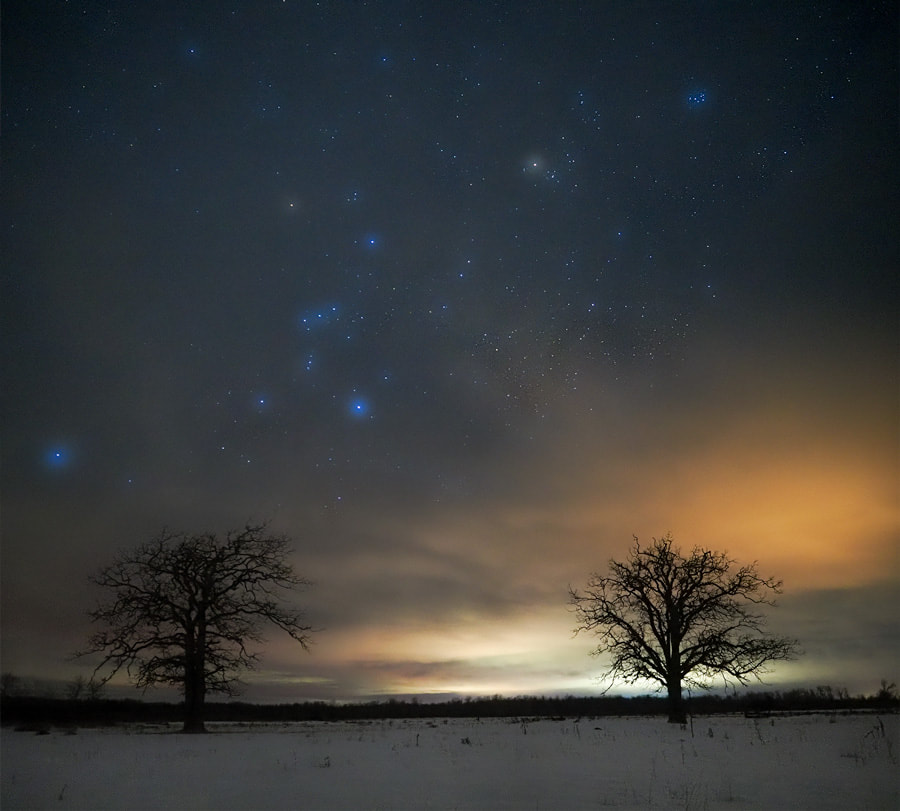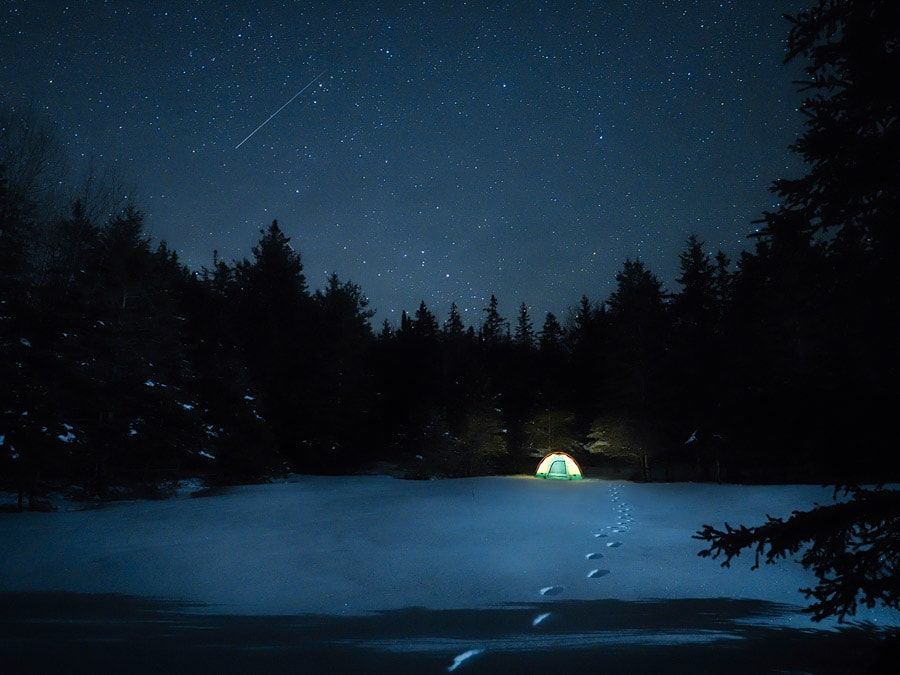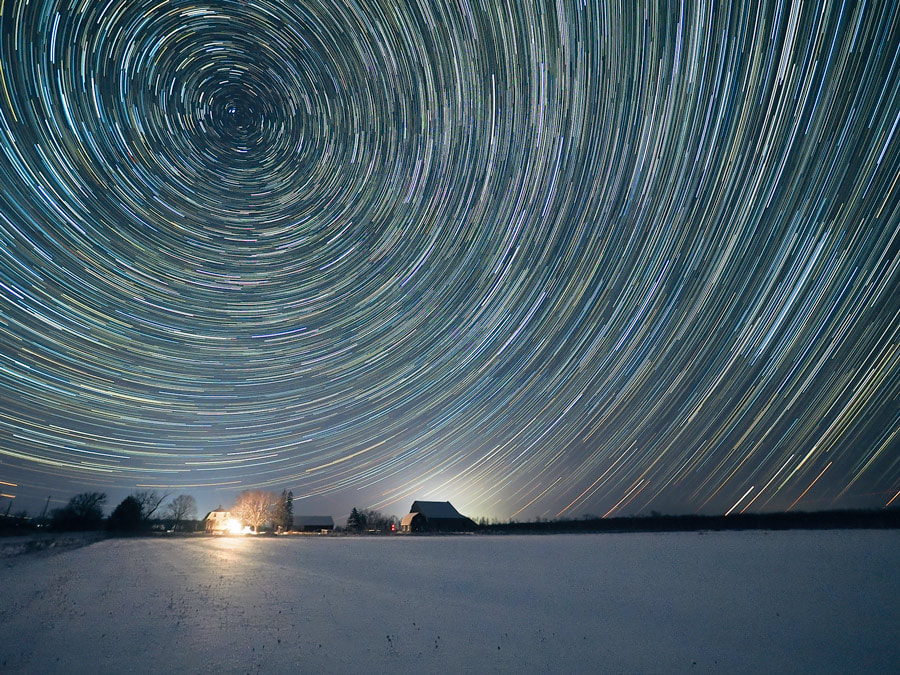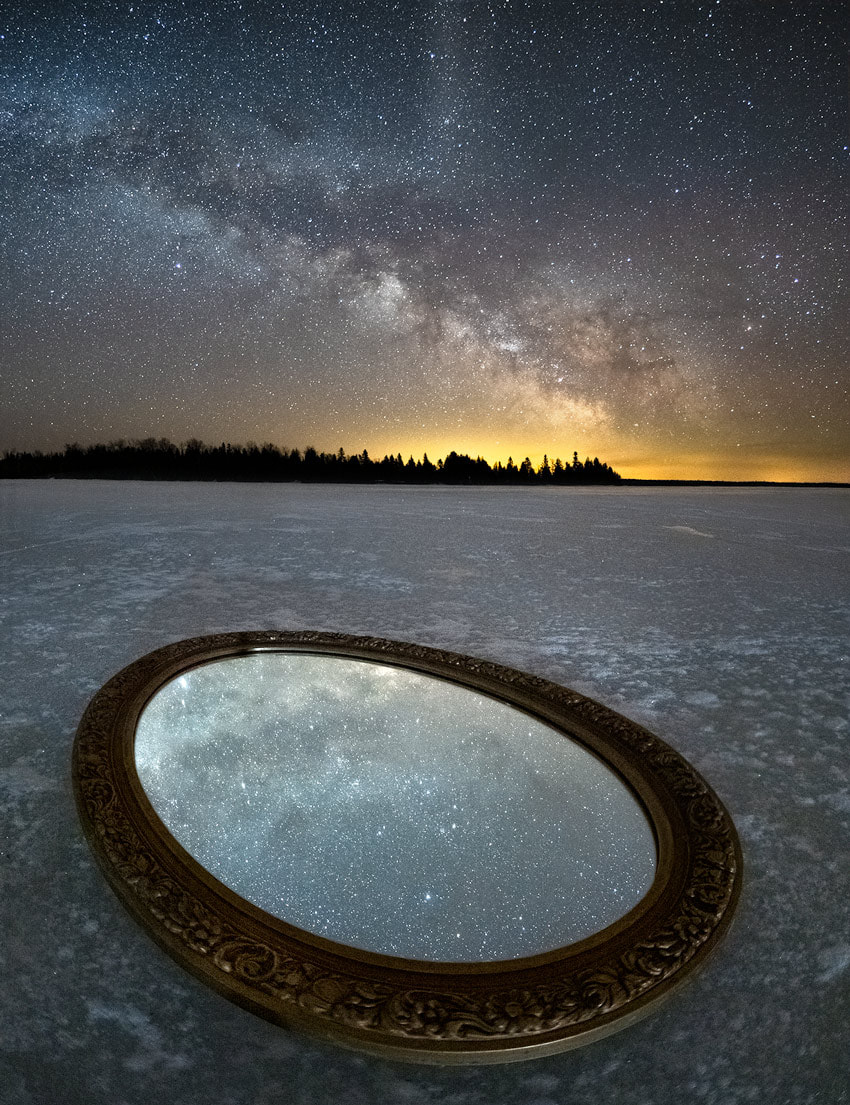|
A Stellar Innovation Astrophotography has become one of the fastest growing genres of photography. Today’s digital cameras and lenses are able to capture high quality night sky images like never before. And with more and more great images making their way onto social media, photographers who felt that this type of photography was beyond their skill set are now being inspired to get out and photograph in the dead of night. A few short years ago, I was one of those self-doubting photographers. Now I try to photograph the night sky whenever an opportunity presents itself. On a recent trip to Monument Valley, I wanted to photograph the ‘mittens’ under the light of a full moon. So, I got up at 3 a.m., walked a short distance from the hotel, set up my E-M1X with the 17mm f.1.2 lens and proceeded to create a 4-shot panorama. The results looked good on the LCD, but I wanted a slightly larger field of view so I switched to the 12mm f/2 lens. I focused on the stars, like I’ve done countless times before, and repeated the 4-shot pano. I checked the shots before I packed things up and, with my aging eyesight, all looked good… until I uploaded them onto my computer. Somehow my manual focusing with the 12mm lens had completely missed the mark. It is situations like the one in Monument Valley that has me very excited about the Starry Sky AF feature on the E-M1 Mark III. If you are not an astro-landscape photographer, you may not think this is a big deal, but it really is. Regular auto-focus doesn't work in dark conditions. The infinity marker on the lens is not always accurate and therefore you need to rely on manual focusing. The manual focus-assist features that are built into all OMD cameras are a great way to improve your accuracy when focusing manually. But, over the years there have been a number of times where I’ve returned home after hours of shooting only to discover that, once I viewed them on my computer monitor, the focus was a bit soft. Starry Sky AF eliminates that issue. And it works beautifully! Here's what Olympus says about the feature, "Starry Sky AF, which is new for the OM-D E-M1 Mark III, is a feature that will revolutionize the world of astrophotography. In the past, photographers have traditionally relied on manual focusing. A new algorithm was developed to offer accurate focusing even on the tiniest stars shining in the night sky, enabling ultra-high-precision autofocusing that has been admired even among professional astrophotographers. There are two modes in Starry Sky AF. Speed Priority mode (default setting), which prioritizes focusing speed and complete AF operations in a short period of time. Thanks to the powerful image stabilization, this feature makes handheld astrophotography possible using a wide-angle lens. Accuracy Priority uses a fine-tuned focus scan and is effective for shooting specific stars with telephoto lenses."
Shoot for the Stars! So here is how the process works. Once you've composed your shot and enabled Starry Sky AF, you press the AEL/AFL button. The message, "Starry Sky AF is Running" appears on the LCD. The camera then begins the process of trying to lock focus on the stars. I typically use the 3x3 or 5x5 target point and ensure that it is positioned in an area of the frame where the stars are brightest. Acquiring focus usually takes about 5-10 seconds when set to the Accuracy Priority Mode. Once focus is achieved, the target point (green rectangle) will blink once, an audible beep will be heard, and a green circle will flash briefly. Then you are ready to shoot. Final Thoughts and Images In the time that I have had the Mark III I have been out several times to shoot the night sky under a variety of conditions, including thin cloud cover. Starry Sky AF was able to achieve focus each time (sometimes it takes more than one attempt), and maintain that focus throughout the session. For more information about astro-landscape photography please check out the following articles;
 Since the foreground ice in this image was fairly close I needed to focus bracket. For the first shot I used the Starry Sky AF to ensure the stars and background were sharp. For the second shot I used manual focus for the foreground. The two images were then blended in Photoshop. (7-14mm f/2.8 PRO, ISO6400, 20s @ f/2.8)
18 Comments
Tobias Weisserth
3/25/2020 06:39:34 pm
I do remember that there is an option to have the lens reset focus to infinity when the camera is turned on. Turn focus mode to manual focus, turn the camera off and on again and it should be precisely set to infinity.
Reply
John Lucas
5/3/2020 10:32:28 am
Enjoyed your informative article on Starry Sky AF, any chance this wll work with the 300mm f/4 for deep space shots?
Reply
Peter
5/12/2020 08:14:38 am
John, this will absolutely work for deep space shots.
Reply
Nick Harmer
5/12/2020 07:58:36 am
I am about to purchase the EM1.3 for astro (amongst other uses) with with Oly 8/1.8. With the Em1.3, is it possible to engage high rez mode whilst shooting a 15 sec exposure? Thx Nick
Reply
Peter
5/12/2020 08:13:04 am
Hey Nick, unfortunately high res mode will not work for longer exposures such as those at night. High res relies on sensor shift technology. Eight separate images are taken, each with the sensor in a slightly different position. For each of these positions the camera would take a 15s exposure. That would mean a total exposure of 2 minutes, but which time the stars have travelled a significant distance. So technically it could be done, but the end results would be unacceptable.
Reply
Alec
10/15/2021 09:47:47 pm
An amendment to that reply, refer to this video by Alex McGregor, 10/12/2020 04:47:16 pm
Thanks for the information. I bought the E-M1 MKIII the first part of the year and I am really impressed with this camera. I recently bought the MoveShootMove Tracker and I am gearing up to shoot the night skies. 1) Did you take multiple shots and then stack them in processing? 2) Do you shoot your foreground separately and then blend together later? Look foreword to your answers.
Reply
11/21/2020 08:41:44 am
Peter,
Reply
Valerie
8/31/2022 04:34:41 pm
When using Starry Sky Af while taking a continuous series of images to stack for noise, doesn't the camera refocus each time the shutter button/cable release is pressed? No one mentions that. Just wondering if I would need to switch to manual focus after Starry Sky AF has done its thing. Thanks for the info!
Reply
Peter Baumgarten
8/31/2022 04:42:37 pm
Hi Valerie,
Reply
Valerie
9/1/2022 12:05:31 pm
Thank you for your quick response! And that does help. I was out shooting stars last night and the Starry Af worked perfectly the first time, and didn't have to focus again until I moved. Thanks so much, Peter!
Patrick
4/20/2023 06:39:48 pm
Hi Peter,
Reply
7/10/2024 02:23:59 am
Developed to mimic your natural eyelashes, each Xtreme Lashes Eyelash Extension is individually applied to a single eyelash, resulting in a gorgeous, natural appearance. Using a proprietary adhesive, Xtreme Lashes Eyelash Extensions are only applied by a trained and certified Xtreme Lashes® Lash Stylist.
Reply
7/10/2024 03:03:35 am
Maya Parts is a cellular replacement parts distribution and wholesale operation involved exclusively in B2B sales and services.
Reply
7/10/2024 05:59:08 am
Maya Parts is a cellular replacement parts distribution and wholesale operation involved exclusively in B2B sales and services.
Reply
Leave a Reply. |
AuthorPeter Baumgarten is a professional photographer and educator. He is also an Olympus Visionary and NiSi Official Photographer. Categories
All
|
